We started out just walking around the town because we had an 11:15 time frame to be at the entrance for the underground tour. So we stopped in the Church of St Joseph. It was actually beautiful inside.
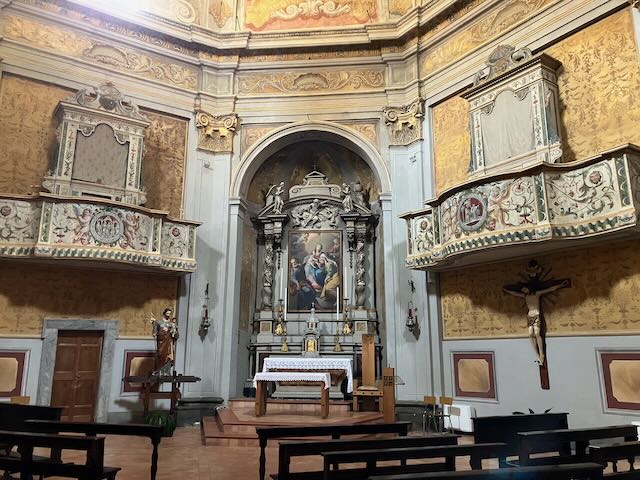
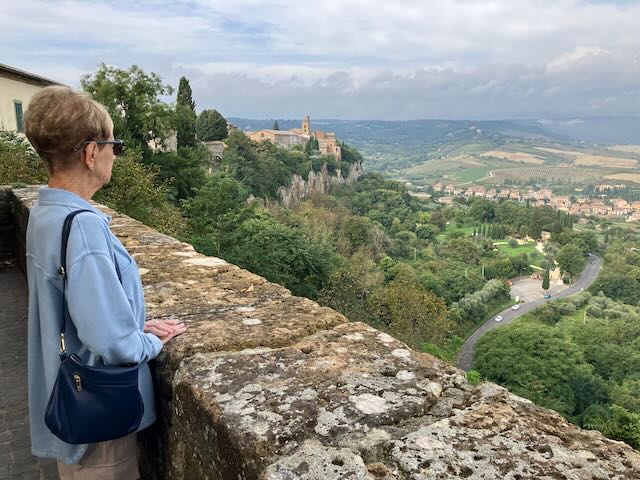
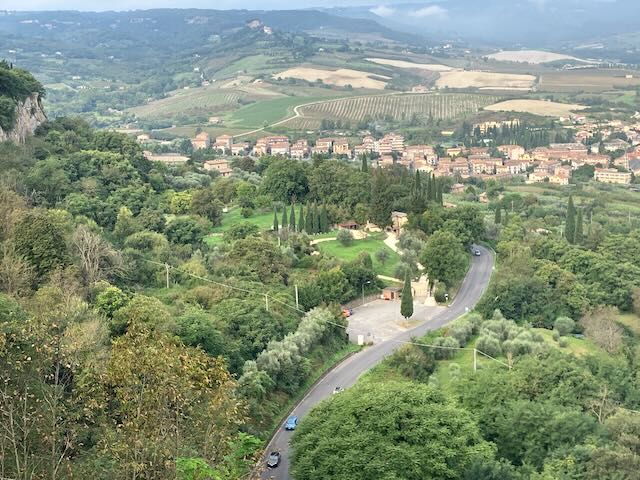
Then we went to the underground tour and it was amazing. The photos are just a few that we took. Factoid: The owner of every house structure in Orvieto also owned a cave under their building. That ownership still exists today although now they are used more for storage than safety from invaders or for purposes you’ll see below. All told, at one time there were 1040 of these caves.
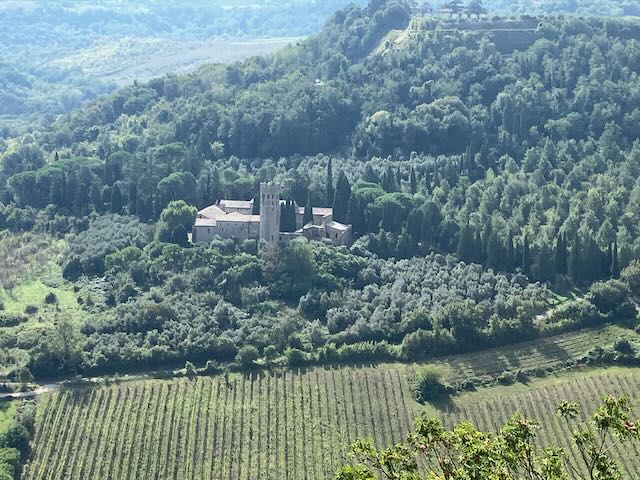
The first cave we entered was where the grist mill stone was contained. Across from the stone was the olive oil press where they made olive oil – first press oil was for the more wealthy folks – the second press of the olives was sold to those who were not so wealthy. Very interesting. The first pressing provided the virgin oil with a better taste. Throughout the caves, the temperature was and is a constant 18º C or 64.5º F, and the humidity was/is a constant 89%. Even today, the “cold pressed,” extra virgin olive oil throughout Italy is best and the most expensive.
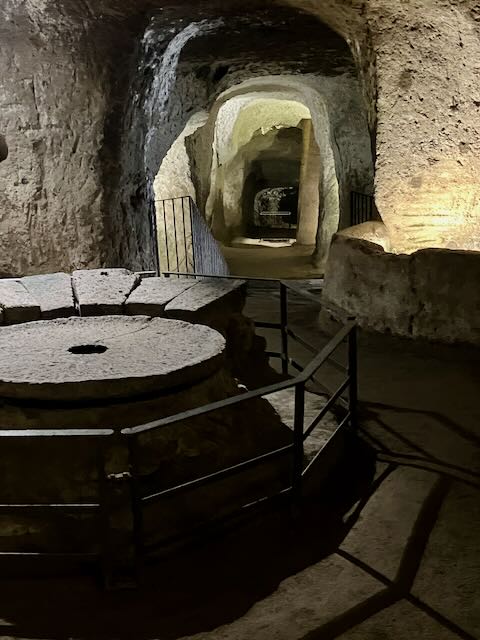
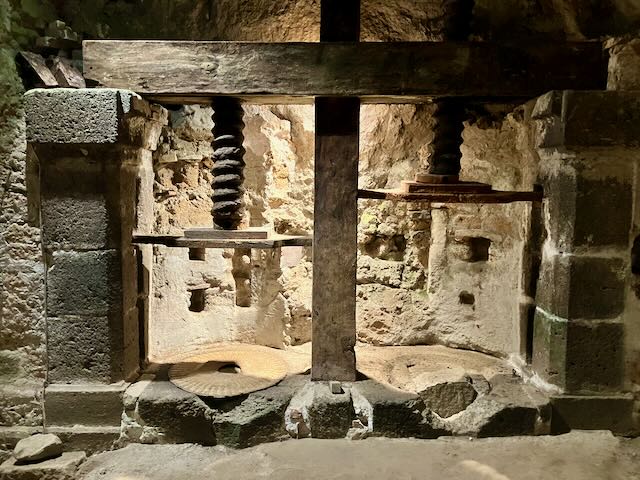
Then there were three caves the holes for the pigeon nests were dug out! The wealthiest group of owners had the most holes and the pigeons stayed inside them. There is a small window to the outside and once established in these nest, the pigeons would fly off to eat (bugs) but always returned to the same window and same nest. No owner/human effort required! Eventually the owners ate the pigeons or sold some to the other folk in Orvieto. The guano, or pigeon excrement, was used or sold as fertilizer. Both were means of making money.
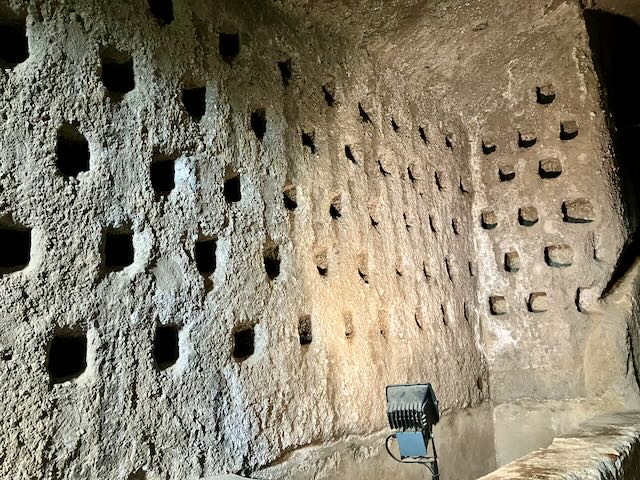
After that we met Mary Henderson and Frank Litaker from Cresswind Peachtree City, our home nowadays, who were on a last minute cruise and came to Orvieto so naturally we had to meet them. They had time to come to the apartment and see what it was like and then we took them on a little tour of the area. Got to spend time with them – what a wonderful, surprise opportunity.
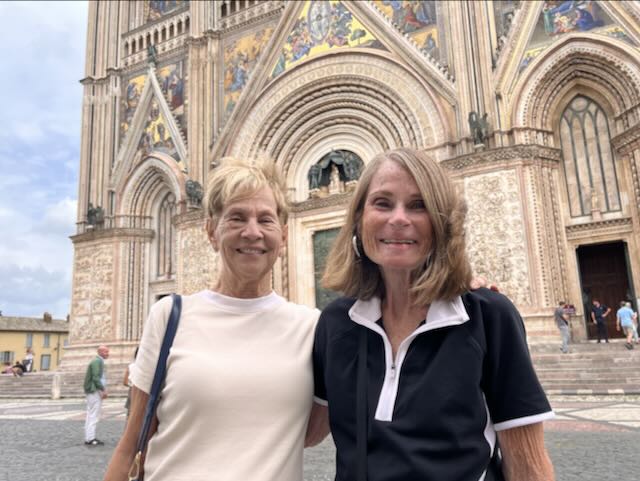
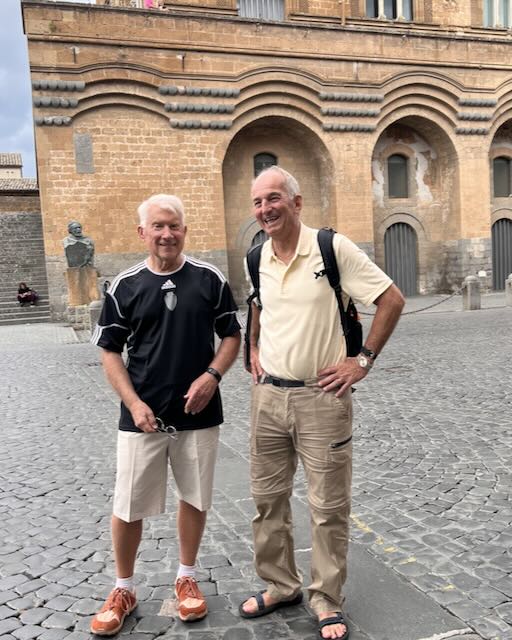
That wraps up our Monday, made special by an unexpected “drop in” of friends from home. Tomorrow, the Pozzo di San Patrizio or Saint Patrick’s Well. Ciao, ciao.